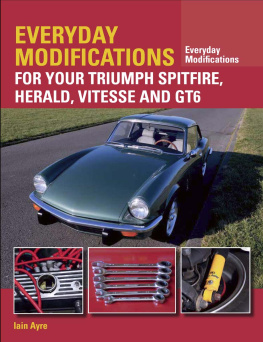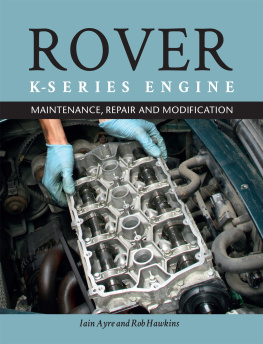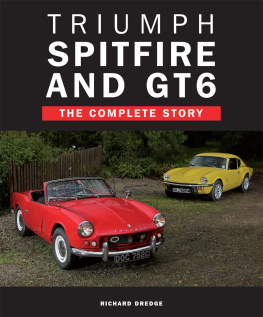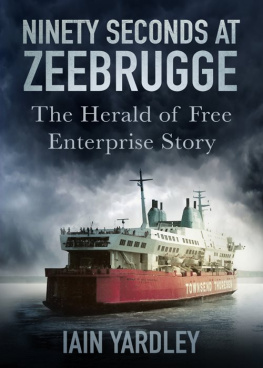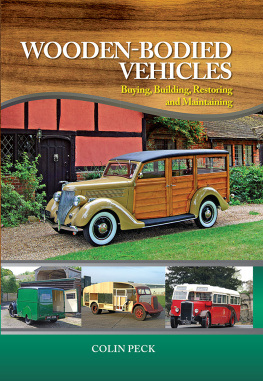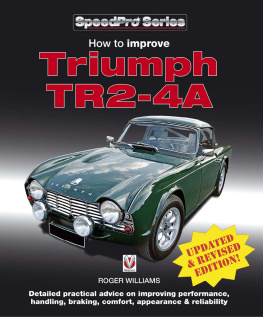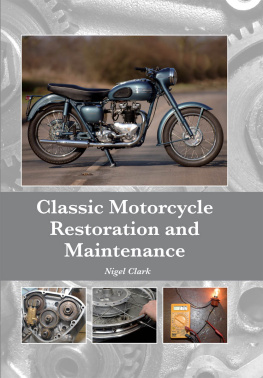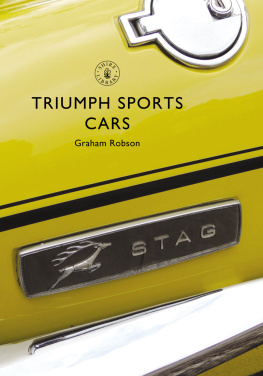All rights reserved. No part of this publication may be reproduced or transmitted in any form or by any means, electronic or mechanical, including photocopy, recording, or any information storage and retrieval system, without permission in writing from the publishers.
introduction
Straight from the horses mouth is an excellent adage suggesting where you would find good advice, and in this book it is fulfilled on three counts: this is because here we have an author who owned a good few Triumphs back when they were still fairly current; a technical consultant who has run a Triumph restoration business for decades; and input from a designer who worked at one of the prime developers of tuning accessories for Triumphs.

Iain Ayre has been driving and writing books and articles about Triumphs, MGs, Jaguars, TVRs and other British classics for longer than he cares to remember: hence the scarf made of event lanyards.
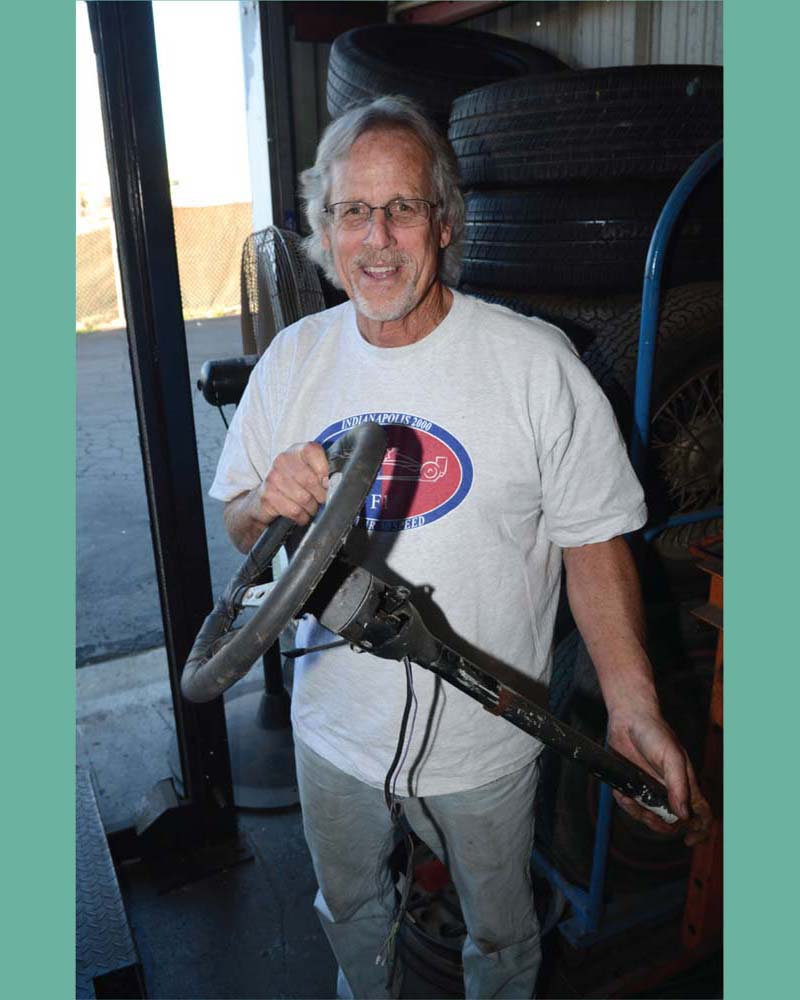
Randy Zoller has been racing, restoring and repairing Triumphs, Healeys, Morgans, TVRs and other British classics for longer than he cares to remember as well. Check him out at www.britishheritagemotorsports.com.

Iains default/favourite motor car during the 1970s was the Triumph Vitesse, alternating between convertible and saloon versions. This was one of the better examples.
Many of the Triumphs photographed for this book are left-hand drive. This is because I live in the Pacific Northwest, which was a significant export market for Triumph and MG. Much of the research for the book also took place at a Triumph restoration shop, in San Diego, California. Something like half of all Spitfire production went to North America, and many of them are still there. On the Vancouver Craigslist, a free advertising site, on a random day in June 2015, there were twenty-nine Triumphs for sale.
My Triumphs have comprised an early Herald convertible with a cardboard dash; a Herald estate with crumbling outriggers on which a rear trailing arm came adrift under way, which was even more of a surprise than a previous swing-arm-related rear-wheel jack-up; a Vitesse Six convertible, and a couple of Vitesse saloons; two Spitfires that were bought at December prices, driven through the winter at college to save money, then painted and sold in June to fund long holidays in France; a late-model GT6; and finally a Midge, which is a 1930s-style kit car intended for a Herald or a square-tube replacement Herald chassis, and which in my case was the first 6-cylinder example. This was based on my mothers crumbling Vitesse, which she crashed, and which was transformed into a Midge and given back to her: she drove it with style and panache until her eighties.
I have nearly killed myself swerving in a Herald convertible with swing axles; I have enjoyed the relative comfort of sitting on the front tyre of a Vitesse in weekend sunshine while working on its engine, in marked contrast with the back pain or grovelling involved in fixing lesser cars; and I have match-ported and polished six intake tracts while sorting out some hardened valve seats for the Midge. In recent years I have enjoyed writing regularly for Triumph World magazine, which is an excellent Triumph resource with a knowledgeable and hands-on Triumphowning editor, has intriguing and inspiring stories, and a set of very useful advertisements that tell you exactly where all the key Triumph spares are to be found.
Triumphs have been fun to own, and I recommend them.
FOCUS
This book is concerned with improving the 4-cylinder Spitfire and Herald, and the 6-cylinder Vitesse and GT6, with engines ranging in size from 948cc to 1998cc. The larger Triumph engines found in the TR6 and the Triumph 2500 were not fitted to the smaller Triumphs, and used more substantial gearboxes and differentials. The drivetrains fitted to the smaller Triumphs were marginal when fitted to 2-litre engines, and would not survive long behind a 2500cc engine. However, the book does include information on the engines and gearboxes out of the TR6, which can be used in the smaller Triumphs to great effect.

Randy Zoller has run the British Heritage Motorsports (.com) restoration and vintageracing workshop in San Diego for decades: he is an automotive archaeologist as well as a musician and a master mechanic.
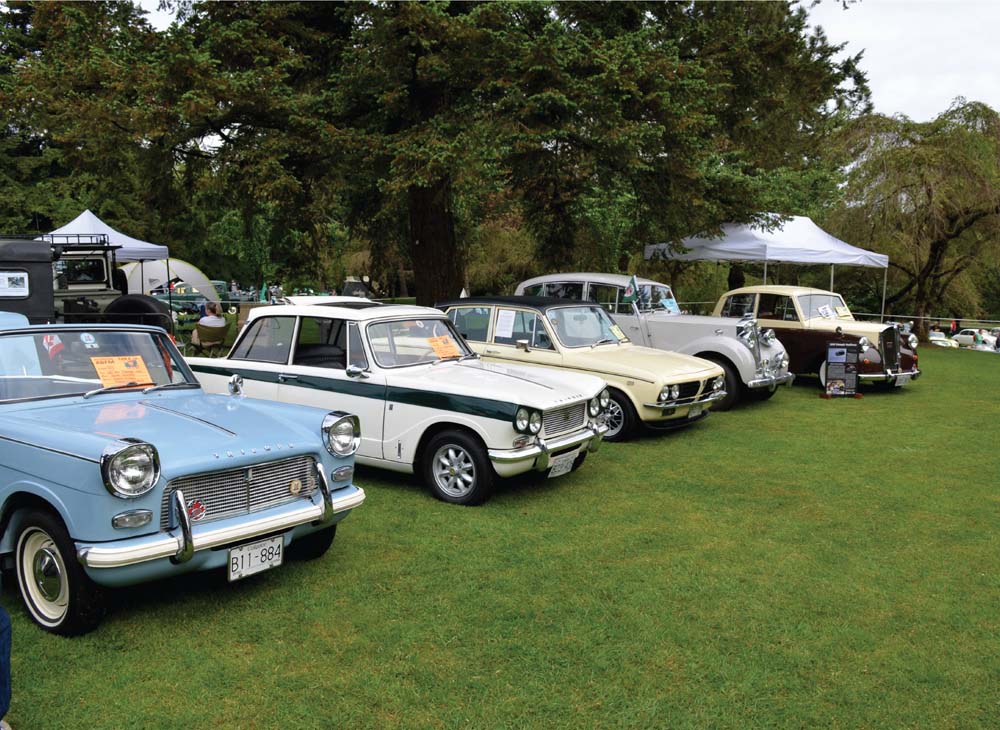
Triumphs remain among the worlds favourite reasonable-budget classics, not least because of spares availability and their robust chassis as well as their general charm and good looks.
HISTORY AND BACKGROUND
The Triumph story starts in 1886 with bicycles, and then motorcycles in 1902. The first cars appeared in 1923 in the form of the 10/20, built to a design by Lea-Francis. The Super 7 was next, selling well from 1927 to 1934, but rather than competing for the mass market with Austin and Ford, Triumph changed direction towards making expensive cars such as the Southern Cross and the Gloria, and created just three straight-8-engined Dolomites, inspired by the Alfa Romeo 8C. The 1930s were hard times, and Triumph ran into financial trouble, first selling the motorcycle division, and then going into liquidation in 1939. The company was bought out of bankruptcy and revived, but the factory was flattened during the war.
The Standard Motor Companys flamboyant Captain John Black then fell out with William Lyons, and bought what little was left of Triumph, mostly the name, with the idea of building a more prestigious brand than Standard to compete against what was then SS, which became SS Jaguar, and then just Jaguar when the letters SS acquired unfortunate Nazi connotations.
The Standard Motor Company had started up in 1903 in Coventry, and after rather less of a bucking-bronco ride through the 1920s than Triumph, settled down in the 1930s to producing a respectable number of Standard 9s and 10s, worthy but dull low-to-medium-budget family cars.
The 1948 Vanguard was the first properly post-war British car design, and was very American in its styling, although it was really too stubby to look as good as its contemporary period American designs, which have the physical length to resolve those dramatic lines properly. Standard continued to develop along the same lines, with mostly budget cars; in 1953 they offered the cheapest four-door car in Britain. And also in the same year the Triumph name came back to life with the TR2.

